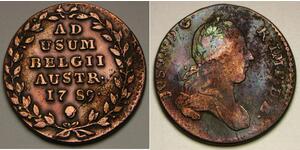[ 5080] BYZANTINE - HERACLIUS - Bronze 12 Nummi (17mm, 5.45gm.) Alexandria mint: 610 - 641 A.D. Reference: DOC 189; SB 853. Crowned facing busts of Heraclius and Heraclius Constantine. Large IB; between, cross potent on two steps; AΛЄΞ in exergue. Provided with certificate of authenticity. CERTIFIED AUTHENTIC by Sergey Nechayev, PhD - Numismatic Expert Flavius Heraclius Augustus (Greek: Φλάβιος Ἡράκλειος; known in English as Heraclius, or Herakleios; c. 575 - February 11, 641) was a Byzantine Emperor of Armenian origin, who ruled the Eastern Roman Empire or Byzantine Empire.[A 1] He was in power for over thirty years, from October 5, 610 to February 11, 641 and was responsible for abandoning the use of Latin in favour of the Greek language in official documents, further Hellenising the Empire. His rise to power began in 608, when he and his father, also named Heraclius, the viceregal Exarch of Africa, successfully led a revolt against the unpopular usurper Phocas. Heraclius' reign was marked by several military campaigns. The year Heraclius came to power, the Byzantine Empire was threatened on multiple fronts. Heraclius immediately had to fight the invasion of the Empire by the Sassanians who were ruled by the Persian king Khosrau Parvez. The first battles of the campaign ended in defeat for the Byzantines; and the Persian army fought their way to the gate of Constantinople, the capital. The Persian army attacked the city from the east while an army of Avars, Slavs, and Bulgars attacked it from the west and from the sea. However, because Constantinople was protected by a strong navy and impenetrable walls, Heraclius was able to avoid total defeat. Soon after this, he initiated a campaign to rebuild and reform the military. Following this success Heraclius moved into Persian territory in 627 and won a decisive battle at Nineveh defeating the Persian army. He was the first Emperor to engage the Muslims, and, in the Islamic world, he is seen as something of an ideal ruler who studied the Qur'an, was a true believer of Islam, and viewed Muhammad as the true prophet, the messenger of God. After his victory over the Sassanid Empire, he faced a new threat with the rising power of Islam. The Persians were quickly defeated by the Islamic forces and in 634 the latter invaded Syria, defeating the emperor's brother Theodore. Heraclius eventually lost Syria in a string of battles. Within a short period of time the Arabs would conquer Mesopotamia, Armenia, and Egypt. In religious matters, Heraclius is remembered as the driving force in converting the peoples migrating to the Balkan Peninsula. At his request Pope John IV (640-642) sent Christian teachers and missionaries to the Dalmatia, newly Croatian Provinces settled by Porga, and his clan who practiced Slavic paganism. He tried to repair the schism in the Christian church in regard to the Monophysites by promoting a compromise doctrine called Monothelitism; however, this philosophy was rejected as heretical by both sides of the dispute. Early life Origins Heraclius was the eldest son of Heraclius the Elder and Epiphania, an Armenian family from Cappadocia.[A 2][4] Beyond that, there is little specific information known about his ancestry. His father was a key general during Emperor Maurice's war with Bahrām Chobin, usurper of the Sassanid Empire, during 590.[5] After the war, Maurice appointed Heraclius the Elder to the position of Exarch of Africa. Revolt against Phocas and accession to Emperor In 608, Heraclius the Elder renounced his loyalty to the Emperor Phocas, who had overthrown Maurice six years earlier. The rebels issued coins showing both Heraclii dressed as consuls, though neither of them explicitly claimed the imperial title at this time.[6] Heraclius' younger cousin Nicetas launched an overland invasion of Egypt; by 609, he had defeated Phocas' general Bonosus and secured the province. Meanwhile, the younger Heraclius sailed eastward with another force v ...
Mehr...

|
Beigetragen von:
anonymous 2015-08-18 |
Similar Coin Groups
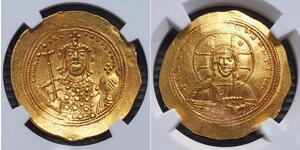
1 Histamenon Byzantinisches Reich (330-1 ...
Diese Gruppe hat 11 Münzen / 8 Preise
Add coin to this group

10 Mark Deutsche Demokratische Republik ...
Diese Gruppe hat 9 Münzen / 9 Preise
Add coin to this group

1 Follis Byzantinisches Reich (330-1453) ...
Diese Gruppe hat 5 Münzen / 2 Preise
Add coin to this group

1 Obol Antikes Griechenland (1100BC-330) ...
Diese Gruppe hat 6 Münzen / 4 Preise
Add coin to this group

1 Tetradrachm Antikes Griechenland (1100 ...
Diese Gruppe hat 31 Münzen / 31 Preise
Add coin to this group

1 Histamenon Byzantinisches Reich (330-1 ...
Diese Gruppe hat 11 Münzen / 7 Preise
Add coin to this group

1 Solidus Byzantinisches Reich (330-1453 ...
Diese Gruppe hat 4 Münzen / 3 Preise
Add coin to this group
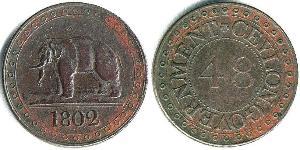
1 Stiver Königreich Großbritannien (1707 ...
Diese Gruppe hat 7 Münzen / 5 Preise
Add coin to this group
2025-05-29
- New coin is added to 1 Rubel Russisches Reich (1720-1917) Silber
1 Rubel Russisches Reich (1720-1917) Silber
Diese Gruppe hat 12 Münzen / 12 Preise
⇑
1912,Russland. Nikolaus II. 1894-1917. Rubel 1912, St. Petersburg. Denkmal für Alexander III. Bitkin 330 (R). Winzige Kratzer, vorzüglich +.
2025-05-25
- New coin is added to 2 Liard Austrian Netherlands (1713-1795) Kupfer
2 Liard Austrian Netherlands (1713-1795) Kupfer
Diese Gruppe hat 4 Münzen / 4 Preise
⇑
AUSTRIAN NETHERLANDS 2 Liards 1789 - Copper - Joseph II. - VF+ - 1375 *
Das könnte Sie auch interessieren:

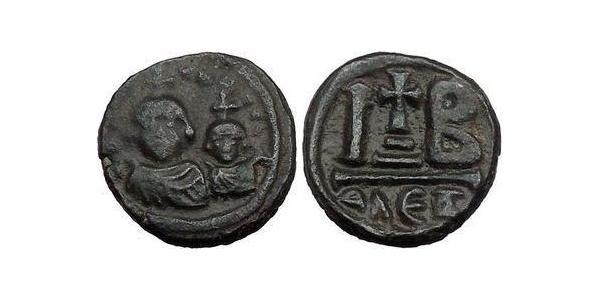




-300-150-72sKbzbis7EAAAFPBUQ1Mk0C.jpg)
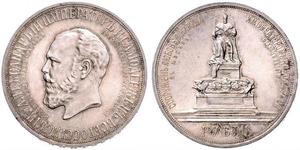
-300-150-N7QKX9ISGfEAAAFX9awaL_VH.jpg)
